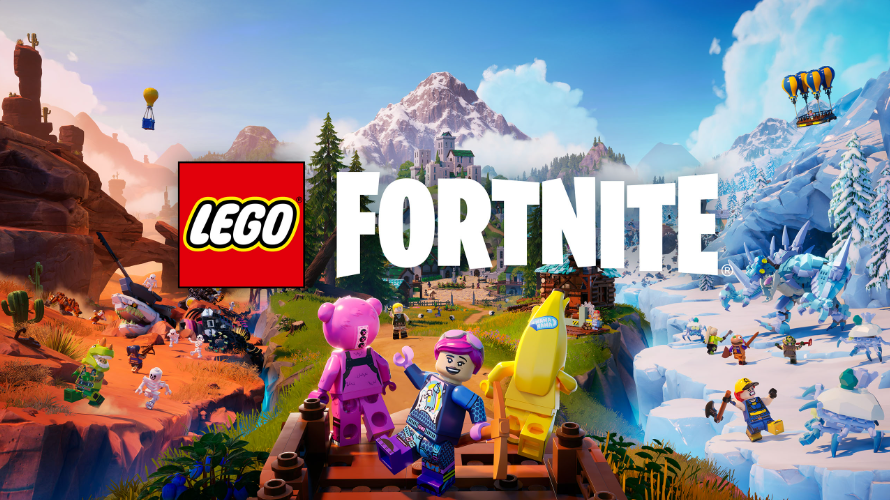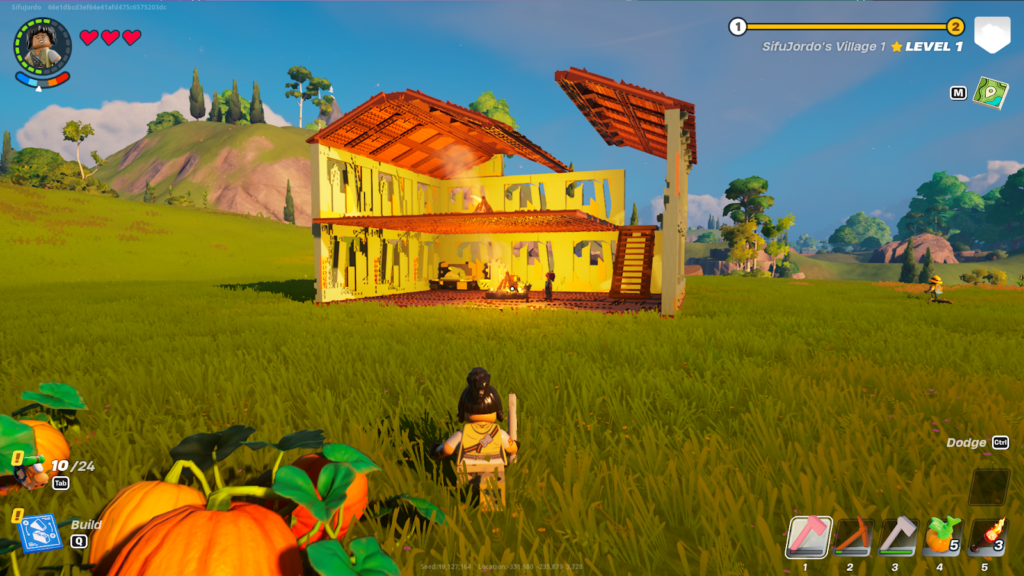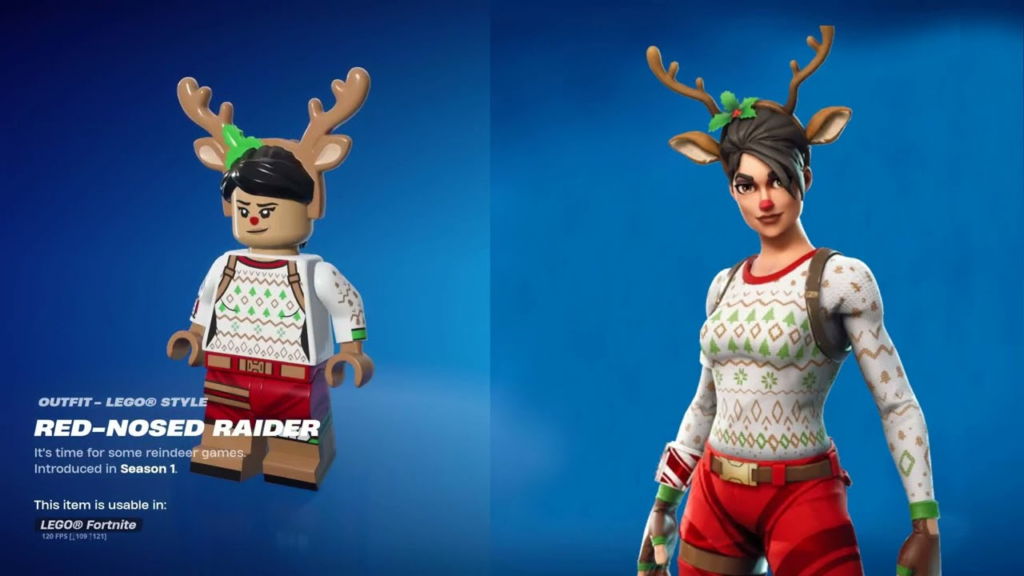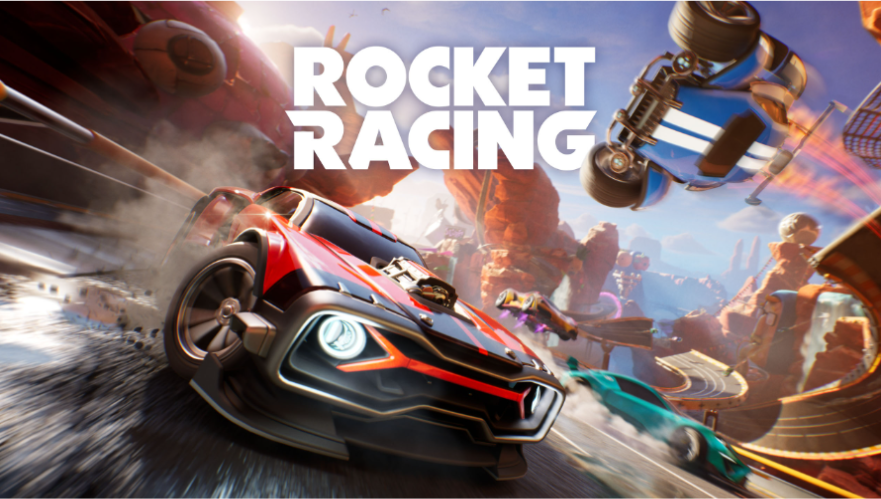
Epic’s huge Big Bang launch, released on December 2nd, revealed three completely new experiences in Fortnite: LEGO Fortnite, Rocket Racing, and Fortnite Festival. LEGO Fortnite was released on December 7th to massive success, hitting 2.4M peak concurrent users. That’s not far off from Fortnite Battle Royale’s peak of 3.1M CCU that was set when Epic released the OG map in Fortnite Chapter 4, Season 5, in early November.
Rocket Racing (think Trackmania plus Crash Team Racing) was released next, hitting a peak of 625K, and Fortnite Festival (like Rock Band or Guitar Hero) put a nice bow on the Big Bang releases with a peak of 847K concurrent users.
If Epic’s intent was to shock and awe, it worked. The Big Bang reverberated around the industry and garnered a lot of interest, even in nongaming media, with the likes of Forbes stating: “Fortnite Has Actually Made The Metaverse After Everyone Else Quit.”
Player interest has also exploded. Data provided by Gamesight shows that Twitch channels that cover racing, rhythm, and survival games spiked up massively when the trailer was released and the experiences were launched.

More importantly, the Big Bang has managed to acquire and engage interest from new players and those who had churned out. The charts below show the share of Fortnite streaming and viewing hours coming from players that had not been playing Fortnite in the preceding six months.

It's also done wonders for player engagement, with overall Fortnite daily average CCUs seeing a huge spike with the release of the new experiences and a growing trendline.

Of course, we all have to applaud Epic for such a successful launch of an idea six years in the making.

But beyond hyperbole and kudos, we should take a deeper look at Epic’s strategy. What’s the long-term plan, and how do these games fit into the puzzle? The first step is to look at the games.
Lego Fortnite

LEGO Fortnite (see gameplay video here) is the largest and most full-fledged of the experiences. It’s a survival crafter, in the mold of Minecraft and Valheim, with a smattering of Animal Crossing, only with a LEGO coat of paint. It also feels very reminiscent of LEGO Worlds, the sandbox title from TT Games.
In LEGO Fortnite, you begin by creating a new private world, and can share the key for that world to play with up to seven friends. From there, it’s a relatively standard survival crafter. Collect resources, craft tools, upgrade your homestead, explore. Rinse and repeat. You can also build up your village, and entice new villagers to move in — the Animal Crossing element. These villagers can help you gather resources or even accompany you on expeditions.
It’s a really polished, charming, and most importantly, fun experience. The only criticism of it would be that the building is slightly clunky if you decide to go free-form instead of using the provided blueprints. I tried building a large mansion with a huge roof, but wasn’t able to get the nice, big gabled roof that I wanted. Of course, it may just be down to gaining more experience as already people have been sharing really cool creations, like this monorail.

The survival experience is quite friendly — you only need to balance two needs, hunger and warmth — and there is a ton to explore.
Speaking of exploration, LEGO Fortnite is huge; according to Epic, at 95 square kilometers, the map is 19 times the size of the Battle Royale maps. That is 66 times the size of the largest Fortnite Creative Island template, the XL Grid Island. It’s also worth noting that UEFN developers can make larger maps than the provided templates, but they’ll have to make good use of memory management and streaming.

It’s incredible how much content Epic has given out for free, and without new monetization hooks, as it still relies on selling customizations. Almost all of the outfits (more than 1,200) now come with LEGO versions, and having a cool LEGO outfit to show off to your friends while exploring can be pretty compelling.

Epic has really hit this one out of the park, and as we can expect more updates in the future, it’s exciting to see how this will grow.
Rocket Racing

Rocket Racing (see gameplay video here) is an arcade racer created by Rocket League developer Psyonix. It’s fast, exhilarating, and… a bit shallow, for now.
The core racing gameplay is great. Like Mario Kart, you drift to take corners with speed and to charge up your boost, and the rhythm of drift-boost-drift-jump feels very polished and fun. The skill ceiling is high, and skilled players need to optimize their racing lines, drift and boost timings, as well as make use of shortcuts to gain an advantage.

Unlike Mario Kart and other kart games though, there are no stat differences between vehicles, keeping in line with Fortnite’s customization-only stance. The downside is that it hampers the depth of the game as, unlike Mario Kart, there’s no experimentation in the “meta.”
The season-based ranked mode works similarly to Rocket League. Players earn points for doing well in a race to climb up the Rank Tiers, while losing races will demote you down to lower ranks.
And that’s pretty much it. While this is almost the exact same structure of Rocket League, its direct player versus player competition adds match-to-match variation that can keep players engaged for a long time. While there is that competitive element in Rocket Racing, as you can smash into opponents to take them out, most races end up feeling much the same after a while. This is exacerbated by the lack of variation in vehicle physics.
Although it's still early days, the engagement stats seem to agree. As of writing (December 15th), Rocket Racing has an average daily CCU of 142K, which is only 21% of its peak of 683K. In contrast, LEGO Fortnite was able to keep 29% (609K) of its highest daily average CCUs (1.8M), and Fortnite Festival was able to maintain 20% (171k) of its peak of 567K.

If this trend continues, Rocket Racing may fade to a slow death, so it’ll be interesting to see what Epic will do to maintain interest. Assuming vehicle stat variations are a no-go, we’ll probably see features that change up how you drive (game modes with physics changes like double gravity or no collision), and new racing modes (time trials, autocross). The tier-based progression could also use some love. As a season is about 10-12 weeks long, it’s a lot of grinding without feeling any real sense of success (beyond tiering up) in between. In real-world racing championships like F1, each race weekend is highly meaningful and full of tension. This gives a nice alternating rhythm of excitement and calm, all while the overall anticipation of who will be the final winner builds over the season (notwithstanding Max Verstappen's utterly dominant performance this year).
Fortnite Festival

Fortnite Festival (see gameplay video here) was the final released experience and the most different of all: a rhythm game… in Fortnite!
Created by Epic-owned Harmonix, it’s a streamlined version of the Rock Band experience. Like Rock Band, you can form a band of four instruments: lead guitar, vocals, drums, and bass. Unlike Rock Band, the vocal track doesn’t assess pitch but is just another rhythm and timing track, and it doesn’t feel as satisfying. Otherwise, gameplay is standard Guitar Hero/Rock Band mechanics.
In Fortnite Festival, you can play solo or with three others, and you begin by creating a set list of up to four songs. There’s a daily rotating pool of songs to choose from, and if you want something to be permanent, you can purchase it for 500 V-Bucks (about $4).
You can also head to the Jam Stage — this is where you can select a song and instrument, and jam along with three others. You can change the tempo, and depending on which song and instrument combinations your band has chosen, you get to perform a live remix that can sound pretty cool. Jamming is also available while in Battle Royale, increasing the value of a song.

Fortnite Festival is also the only new experience that has added a Battle Pass specific to the mode, called the Festival Pass. It’s where you can unlock music-related customization options and tracks, with The Weeknd’s “Blinding Lights” and outfit as the penultimate premium rewards. Interestingly, the Festival Pass is both shorter, has less rewards (22 versus 100), and costs more (1800 V-Bucks versusvs 950) than the regular Battle Pass. Out of the 22 rewards, you get four songs from Fallout Boy, Psy, Bell Biv Devoe, and The Weeknd, making the value proposition low — likely a result of music licensing costs.
While Fortnite Festival is a fun mode, and Epic is committed to having hundreds of songs added to it over time, its true impact is letting people know that Fortnite is for everyone. Even if you don’t care about shooting, racing, or combat, Fortnite will have something for you. And that mindset shift is priceless.
Closing Thoughts
With the three new experiences from the Big Bang, Epic has vastly increased the appeal of Fortnite to a greater set of players. The image below maps Epic’s main experiences against Quantic Foundry’s Gamer Motivation model, and we can see that these new modes help plug motivational gaps.

We do, however, have a niggling question on its long-term strategy: Will the success of Epic's first-party experiences boost engagement (and thus revenue) for creators, or will it overshadow them, making it harder for them to gain attention and players?
In our Fortnite Creative Millionaires piece, we dug into engagement-based payouts, and found that Epic-created experiences made up 66% of total engagement. With these new experiences, that’s looking more like 78%. The top non-Epic creator (prettyboy) makes up only 2% of total engagement, whereas the top creator, theboydilly, captured 6.3% of CCUs when we wrote the previous article.
If we assume that the new influx of players stays over the long run and the engagement splits remain the same, the question will be if the additional V-Bucks purchases from the increased playerbase manage to offset the loss in engagement. It also opens up the question: Will I have to keep competing with Epic for attention?
This is exacerbated by lagging UEFN capabilities – creators were not even able to save player states or change camera angles until earlier this month. Seeing completely bespoke experiences like LEGO Fortnite, Rocket Racing, and Fortnite Festival being released by Epic, and not being able to recreate experiences like that in UEFN feels like a miss for the creator community.
Epic has made great strides in opening up Fortnite to a larger audience with the Big Bang. Whether the player base remains is yet to be seen, but as a firestarter, it worked perfectly. However, the long-term health of a UGC platform is determined by the creators in it. How easily and quickly can they make completely new experiences, and how can they make money from doing it? Epic’s next step must be to accelerate development of UEFN so creators can leverage this renewed interest in Fortnite. If they keep feeling like second-class citizens, they may decide to head elsewhere.
A Word from Our Sponsor: WINDWALK

Windwalk Builds Community Software to Enhance Your Relationship With Customers
Windwalk builds digital communities and the technologies necessary to accelerate them.
Windwalk offers a portfolio of services to top gaming companies in addition to the flagship software offering — Harbor. Harbor is an end-to-end community software that empowers community owners to monitor their community’s pulse, gamify the community experience, and collect actionable insights across a growing number of digital channels.
Integrating a game product with Harbor allows community owners to learn how players are interacting with their products and build toward more engaging and rewarding experiences. Combined with Windwalk’s guidance as an industry leader in community management, Harbor is the first step in your product’s community revolution.
In Other News
💸 Funding & Acquisitions:
- MyGamez closes €1.5M in new funding round.
- Barnyard Games raises $3.4M to make games for Fortnite.
- Zynga and Activision Blizzard-backed Allstar raises another $12M for content creation tools.
- Supercell co-founder supports $1.6M funding round in Chinese publisher MyGamez.
- Magma raises $5M for game art creation and project management platform.
📊 Business & Products
- Niko Partners: Asia and MENA spending $78.5B on in-game purchases in 2023.
- The largest segment in the European games market is mobile.
- Gamefam reports record year for branded games on Roblox and Fortnite.
- Supersocial teams up with Universal Music Group on Beat Galaxy music hub on Roblox.
- Kwalee and Fahy Studios partner to develop global hit games in the KSA.
- Analyst Bulletin: Mobile Game Market Review November 2023.
- Why Hutch mixed match 3 with car culture in Forza Customs.
- Immutable removes ‘gas’ fees from Web3 player experience with zkEVM blockchain.
- Epic is giving away 17 games as part of its holiday sale.
👾 Miscellaneous:
- Kojima Productions and A24 to adapt live-action Death Stranding movie.
- Thunderful Group appoints four new executives in leadership shift-up.
- E3 officially abandoned by the ESA.
- Intel Core Ultra processors debut for AI-powered PCs.
- Netflix has 90 games in development.
- Xbox Cloud Gaming is now available on Meta’s Quest VR headsets.
- Activision highlights accessibility features in Call of Duty: Modern Warfare III.








